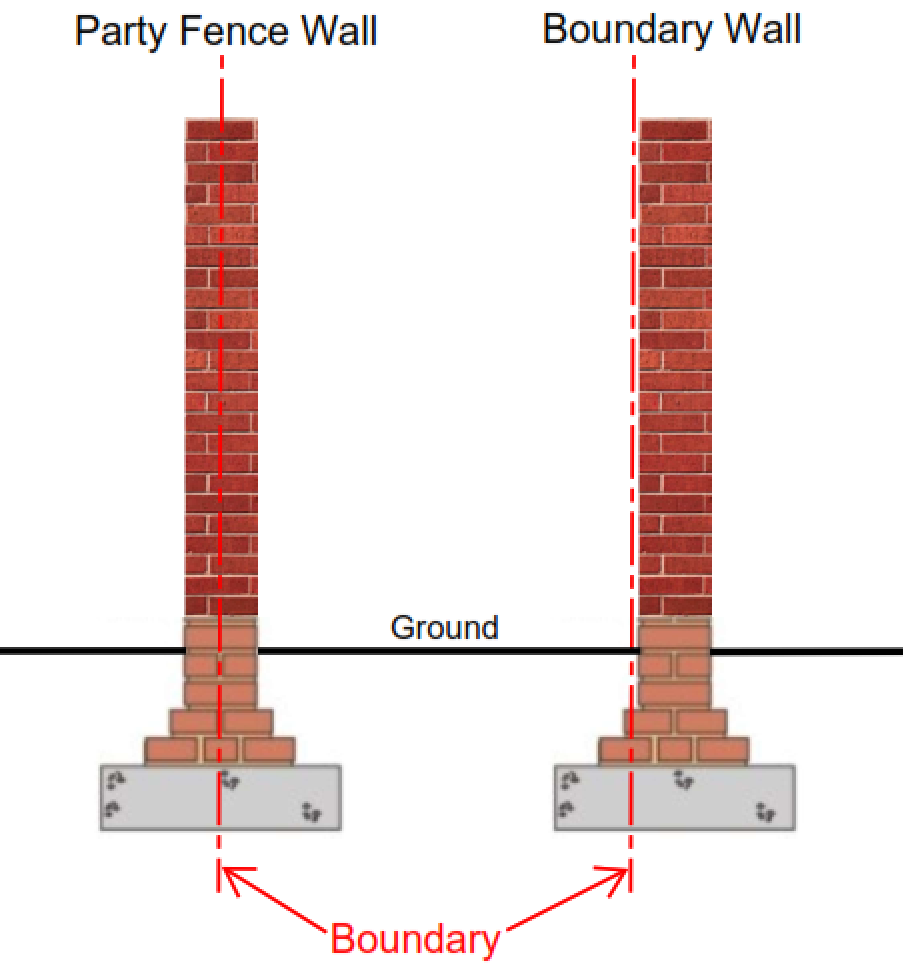Information
For many people undertaking renovations, extensions or construction works to their home it can come as a surprise to discover that you need to serve notices on your neighbours.
In light of this we've put together a brief resource of terms and procedures so that you understand more fully your role in this process and also to help you converse with your surveyor more effectively. Below is some information to assist. If you have any questions or think you may need some assistance please don’t hesitate.
What is a party wall?
A party wall is defined most simply as a wall that is shared by two adjacent properties, where the boundary of the two properties is located within the shared wall.
This occurs in semi-detached, terraced properties, flats, etc. Detached properties can have party structures eg: adjoining garages with a shared wall (important if wanting to extend your garage upwards to create additional storage/office space, etc) as well as brick and concrete boundary walls being considered "party fence walls".
It is important to note that as owners build extensions to their properties the relationship of structures to the boundary can vary along the length of the boundary. A property can have a mixture of party walls and non-party walls.
The adjacent image is a basic cross section through two adjoining homes illustrating the concept of a ‘Type A’ party wall between two properties.
What is a party fence wall?
A party fence wall is a garden wall that is shared by two adjacent properties, where the boundary of the two properties is located within the shared garden wall.
A garden wall that is wholly on the land of a single property is typically referred to as a boundary wall.
It is important to note that as owners add to, and maintain, their properties the relationship of structures to the boundary can vary along the length of the boundary. A property can have a mixture of party walls, party fence walls and boundary walls.
Diagram 2 is a basic diagram illustrating the concept of a party fence wall between two properties.
Do you need to serve notice for your building works?
Listed below are examples of some of the most common types of works carried out where notification may be required under The Party Wall etc. Act 1996:
Building a rear extension.
Building a loft conversion.
Building a conservatory.
Excavations within 3m (or 6m for deep excavations) of any part of the Adjoining Owner's building, a party wall and/or party fence wall.
Underpinning any part of the Adjoining Owner's building, a party wall and/or party fence wall.
Demolishing and rebuilding the party wall, removing chimney breasts, cutting into the party wall for steel beams, flashings, etc.
Minor works such as installing shelves or wall units, replacing recessed electrical sockets, or re-plastering are generally regarded as not necessary for notice to neighbours.
You will need to give 1 month notice for building on the Line of Junction and Adjacent Excavations and 2 month’s notice for works to a party wall/structure before commencing. The Adjoining Owner may consent to the works commencing within these notice periods.

